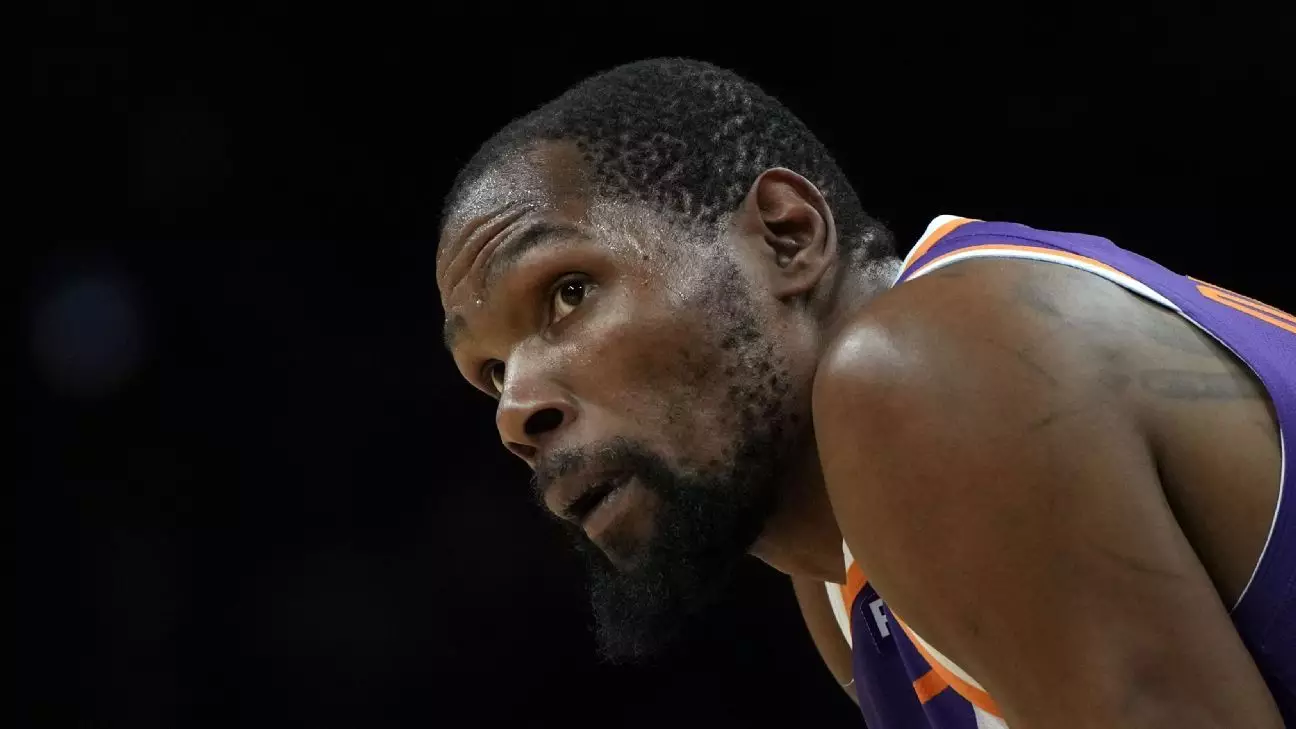The recent flurry of NBA transactions culminating in the historic seven-team trade signifies more than just a chaotic patchwork of player swaps and draft picks. It exposes a league increasingly driven by strategic calculations, financial maneuvering, and a relentless pursuit of competitive dominance. What seemed like a sprawling, complicated web of exchanges is, upon closer examination, a reflection of the NBA’s evolving landscape—one where power plays extend beyond the court into complex financial and tactical gambits that often leave fans and analysts alike bewildered.
This specific deal, involving high-profile players like Kevin Durant, disrupts traditional notions of player mobility. The trade illustrates how star power now serves as a mixed weapon—simultaneously a prize to attract attention and a bargaining chip to reshape team rosters. By trading Durant—arguably one of the league’s most talented and marketable stars—the NBA demonstrates its capacity for maneuvering within an intricate web of franchises, each pursuing their version of a competitive renaissance. But underneath the surface, this transaction exposes something more unsettling: a league increasingly disconnected from the authenticity of team-building rooted in loyalty and culture, turning instead into a high-stakes poker game riddled with legal and financial nuances.
The Illusion of Strategic Stability
Through the layers of draft picks, cash considerations, and player exchanges, what emerges is an illusion of stability—yet at its core, the NBA remains a league of shifting sands. The idea that teams are building with a long-term vision is often belied by the quick, reactive nature of these trades. Houston’s reacquisition of Clint Capela after the Durant trade underscores this point: franchises are not necessarily committed to long-term projects but are instead constantly recalibrating, chasing the fleeting window for success.
Furthermore, the staggering array of second-round picks involved in this deal highlights a disturbing trend. These assets, frequently undervalued and often overlooked, are now being weaponized as currency in the game of league reengineering. It’s a far cry from the days when first-round selections represented tangible hopes for future stars. Now, second-round picks have become commodities, a testament to the league’s shift towards financial valuation over developmental potential. This reality raises questions about the integrity and sustainability of the NBA’s talent pipeline, as picks that once symbolized hope are treated as mere bargaining chips.
The Ambiguity of Player Loyalty and Personal Agency
Kevin Durant’s public farewell from the Phoenix Suns, via X, is a poignant reminder of how player sentiments are often secondary to front-office strategies. His reflections—highlighting gratitude, communal bonds, and anticipation for Houston—are a stark contrast to the transactional nature of these deals. Yet, they also subtly reveal a tension: players like Durant are now pawns in a broader chess game, their careers manipulated by league economics and organizational priorities.
This dissonance underscores a fundamental issue in today’s NBA: the erosion of genuine loyalty. Players may express gratitude and forge emotional bonds, but these feelings are often superficial in the face of franchise decisions driven by win-now mandates, salary cap considerations, or market expansion ambitions. Durant’s articulation of “a world behind the scenes” hints at an awareness of this disconnect—a recognition that the human element is often overshadowed by financial engineering and strategic gameplay.
As fans and insiders grapple with the spectacle, there’s a troubling undercurrent: the league’s obsession with asset management and market expansion risks turning basketball into a commodity. Player relationships become transactional, and the league’s overarching goal seems increasingly focused on maximizing profit rather than fostering authentic competitive narratives or nurturing long-term team chemistry.
The Future of the NBA in a Market-Driven Age
This multi-faceted trade saga underscores an NBA that is hurtling towards an uncertain future—one where the game’s integrity is intertwined with complex market mechanics. The infusion of multiple franchises, heavy draft pick manipulations, and strategic roster shuffles reveals an era where the game is less about athletic excellence and more about tactical dominance in the business realm.
The league’s willingness to orchestrate such elaborate transactions speaks to an environment where unpredictability becomes the norm. While this may appeal to front offices striving for strategic advantage, it can alienate fans seeking genuine narratives rooted in team loyalty and player development. The NBA is caught at a crossroads: will it prioritize sustainable growth and authentic storytelling, or will it continue to chase the adrenaline of blockbuster deals that generate eye-popping headlines but threaten to diminish the game’s soul?
In the end, the recent multi-team trades serve as a powerful reminder of the league’s evolving principles—where power, profitability, and pragmatism often eclipse tradition and genuine athlete-fan connections. Whether this trend paves the way for a more dynamic future or leads to disillusionment among devotees remains to be seen.

